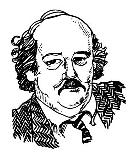(Syndicated to Kansas newspapers Sept. 14, 2015)
 It’s early, but already there are growing indications that the State Senate will be the real battleground for political races next year, and so far, a few moderates are gearing up for that land war.
It’s early, but already there are growing indications that the State Senate will be the real battleground for political races next year, and so far, a few moderates are gearing up for that land war.
On a ballot next year where there won’t be any statewide offices, the focus may be the four-year termed Senate where in 2012 moderate Republicans were scoured from the floor, and conservatives—some more conservative than Gov. Sam Brownback—took over.
Of course, there’s both a House, up for election every two years, and a Senate, but it is the Senate with its smaller 40-member contingent that has historically become the power center of the Legislature.
So far, at least three candidates who will be the moderates in their Senate races against conservative Republican incumbents have stepped into the fray, and at least one, Dinah Sykes, Lenexa, has already started might-be constituent meetings (at a relatively tony Hy-Vee grocery/restaurant) in her district in her primary against Sen. Greg Smith, R-Overland Park, in a reapportionment-created district that is just four years old.
Out west, moderate Rep. John Doll, R-Garden City, has filed to oppose conservative Sen. Larry Powell, R-Garden City, in the primary in an attempt to retake the 39th Senate seat that Powell wrested from moderate Senate President Steve Morris, R-Hugoton, at a contentious GOP 2012 primary, 5,106 to 4,737.
Or in another tack, Republican Lynn Rogers changed his party affiliation to Democrat last month in order to challenge Sen. Michael O’Donnell, R-Wichita, who, recall, in 2012 ousted moderate Sen. Jean Schodorf, R-Wichita, in a surprise victory in the GOP primary.
Now, it’s early, but at least those three races indicate that there may be a wider moderate vs. conservative battle for Senate seats next year, and maybe, just maybe, moderates have learned that in most districts in Republican majority Kansas, the primary election is where the eventual winners are chosen.
The early start by moderates is what it is going to take to change the political leaning of the Senate, which now has 32 Republicans and 8 Democrats.
Don’t ignore the House, of course, but much of what happens in the House is the result of the Senate making policy and refusing to budge—or refusing to budge without considerable House concessions.
Those four-year terms, too, give senators a longer view of what they want Kansas to look like. While a two-year termed House member has to answer to the voters in just over a year after their votes, senators can “give it time” to work out or for constituents to forget their votes.
Except for next year…when the results of earlier votes to slash income taxes have put the state on shaky financial footing, and votes last session to boost taxes significantly (not just the 6.15% to 6.5% sales tax, but slashing the value of good old income tax deductions) were painful, and we don’t know whether they will restore the state’s fiscal stability.
So, we may be looking at one of the longest campaigns for the Senate that we’ve seen in recent years, and we’re looking at Senate members—and their opponents—with a nearly fresh tax increase to haggle over.
Would the tax increase have been necessary if incumbents had cut spending? Were the choices for those tax increases comfortable for Republican voters?
Yes, there’s a lot of ground for Republicans to cover, while Democrats, who will be in the wings in those 32 districts represented by Republicans, can be getting busy now, too, to try to convince Republican voters that the GOP may not be the way they want to go for the next four years.
